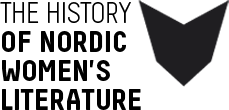After a marriage to celebrated Danish writer Jeppe Aakjær that did not last, Marie Bregendahl coped with life as a single mother by keeping house for her brother who owned a dairy in the Nørrebro district of Copenhagen. Nor was she able to go back; exodus and city were forever part of her make-up. The tension between the rural culture of her childhood and the anonymised city life, in which the individual had to create an identity for her- or himself, became the empirical sounding board for her entire body of works.In this, she carried on the Modern Breakthrough’s naturalistic portrayal of reality, but in her very own distinctive way in which the traditional narrative forms and the modern woman’s chaos of conflicting experience both found a voice.
Tag: Femininity
Towards the end of the nineteenth century, the ‘sons of the people’ formed a united front against the bourgeois culture and ‘decadence’, and a new popular realism entered Danish literature. And the daughters of the people – well, they too embarked on new paths, and a few tried their luck as authors.These women writers cannot be seen as a group in the same way as the rural male writers can. They were isolated women dotted around Denmark, and for most of them writing was a sideline to the work that put food on the table. On the other hand, their rural origin meant that they had some material in common. Acquisition of a written language meant personal liberation for women from the lower classes – a way out of the trammels of class and the anonymous gender.
Ingeborg Stuckenberg saw Johannes Jørgensen’s, Helge Rode’s, and Viggo Stuckenberg’s renouncement of the Modern Breakthrough as a betrayal of everything they had believed in and fought for. She had inspired, critiqued, composed music for her friends’ poems, and written texts for her husband’s literary output. And yet she had no opportunity for countering their deceit. No, she would not be muse, not priestess, not Valkyrie for others – she would be her own soldier.She saw no prospect of being this in turn-of-the-century Denmark. In the spring of 1903, she left everything behind, went to Bremen, and boarded an emigrant ship bound for New Zealand. The following year, on 12 August 1904, she committed suicide, thirty-eight years old.
On the threshold to the twentieth century, the doors to the world stood open. At last the individual had the prospect of liberation from the restrictive bindings of religion, class, and gender. With the new world picture as its mental sounding board, the new century opened up for a progressive process of integration.Women and ordinary people gained access to bourgeois written culture, and they then of course made their mark on this culture.While male writers and scientists were shoring up their threatened masculinity by categorising “Woman” under “primordial Nature”, the women were surely and steadily gaining ground in the men’s bastions of power.
New Faroese Women’s Literature
The few Icelandic women writers to appear around the turn of the twentieth century travel from the countryside to Reykjavík. But it is not contemporary Iceland that frames, in their literary works, their depiction of Icelandic women’s struggles of the modern age.They choose the past as a time frame, the journey back to the patriarchal farming community from which the contemporary identity conflicts and attempted exoduses spring. From this perspective, they thematise the conflicts between duty and freedom and the ambivalence concerning women’s new liberation.
Gender and Class in Icelandic Women’s Literature of the 1970s
The start of the 1960s saw the publication of the first poetry collection by Vilborg Dagbjartsdóttir who, as a modernist and a multifaceted cultural figure, has inspired both a younger generation of Icelandic female poets and poets of her own generation.Poets such as Þóra Jónsdóttir, who made her debut in 1973, and Þuríður Guðmundsdóttir, who published her first book in 1969, were, like Vilborg Dagbjartsdóttir, born and brought up in the countryside, and later settled in Reykjavík, and they are, to some extent, preoccupied with the same poetic subjects. They express themselves in precisely chiselled, minimalist poems that demand the reader’s full attention.
Icelandic writer Svava Jakobsdóttir’s fantastical narratives are witty, their humour and irony emerging not least from their intertextual dialogues. The Bible acts as something of an internal text within her entire oeuvre, but she also refers to world literature, myths, adventures, and women’s magazines. Her epic texts are at their most gruesome and grotesque when she tackles traditional clichés and stock phrases, which people use without thinking: ‘sacrificing oneself’, ‘giving someone a hand’.Svava Jakobsdóttir’s oeuvre is often divided into two parts, the realistic and the fantastical, and it is the fantastical stories that have attracted the most attention. This division, however, is a simplification of Svava Jakobsdóttir’s radical project. She has, in fact, never rejected the realistic art of storytelling, or its social and political references.
Icelandic writer Ásta Sigurðardóttir had a fondness for self-presentation that took her contemporaries’ breath away. All her short stories reflect a tension between, on the one hand, the longing for normality, security, and bourgeois acceptance and, on the other hand, rebellion, a need for freedom, and a deep-seated rejection of bourgeois values.She loved to perform, but no-one else should write her roles for her. Journeying is a recurrent motif in Ásta Sigurðardóttir’s texts, and her characters are alone, in both a physical and an existential sense. Her late texts lack the intensity that characterised her first short stories. The pride, the self-assertion, the queenly arrogance are gone. The gaze is dull, self-hatred is dominant. There is no longer anything worth describing.

